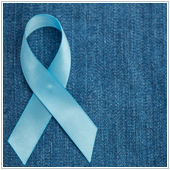 As we welcome back changing leaves and the daily sight of school busses on the road, we also begin a month designated to celebrate the prolonged lives of men, thanks to Prostate Cancer Awareness Month. This September is not only a time to celebrate the return of football season, but also a time to discuss prostate health.
As we welcome back changing leaves and the daily sight of school busses on the road, we also begin a month designated to celebrate the prolonged lives of men, thanks to Prostate Cancer Awareness Month. This September is not only a time to celebrate the return of football season, but also a time to discuss prostate health.
Did you know?
-
According to the CDC, Prostate cancer is the most common type of cancer in men, aside from skin cancer.
-
According to cancer.org, prostate cancer is the second most common type of cancer death among men.
-
217,730 men will find out that they have prostate cancer this year.
While prostate cancer is quite common, we can rest assured that when detected early, it has some of the highest survival rates. That’s why education on this type of cancer is so important.
Screening
People in the following categories are considered to be at high-risk for prostate cancer:
-
African-American men have higher rates of diagnosis and death than any other ethnic or racial group in the United States.
-
Men who have a father, brother or son diagnosed before age 65.
-
Men with multiple family members impacted before age 65 constitute an even higher risk factor.
The chances of getting prostate cancer increase with age. In most cases, the American Cancer Society recommends that men begin discussing the options for prostate cancer screening with their doctor at age 50. In high-risk cases, the conversations about screening are recommended to begin at age 45 or even 40, depending on various risk factors. While many men will commonly discuss screening with their doctors, screening is not always encouraged due to the risks involved. For example, particular screening types commonly produce a false positive.
Symptoms
If men are aware of the symptoms as well as their personal prostate cancer risk, they will be able to make the best possible decision when discussing screening with a healthcare professional. It’s important to discuss this with your fathers, brothers, sons and husbands.
While some men have no symptoms at all and the symptoms for those affected vary, the list commonly includes but is not limited to:
-
pain or burning during urination
-
difficulty starting urination
-
blood in the urine or semen
-
pain in the back, hips, pelvis
Prevention
While there is no proven strategy to prevent prostate cancer, some steps can be taken to reduce the likelihood of diagnosis.
-
Maintain a healthy diet. Some studies have shown positive results from choosing a diet that is low in fat, dairy and alcohol, but high in fish, fruits, vegetables and soy.
-
Fight obesity. Men that are overweight have a higher risk of prostate cancer, so working to maintain a healthy weight effectively lowers your risks.
-
Get some exercise. Physical activity has been correlated with lowering the risk of prostate cancer, heart disease and other cancers.
Health professionals agree that the key to fighting prostate cancer is knowing the risks and the facts. The more we can do to spread awareness about this disease, the more likelihood that the men in our lives will have the opportunity to celebrate more birthdays in their lifetime.
Have questions about the risks and facts associated with prostate cancer? We’re here for you! Just stop by [company_short] and speak with a pharmacy staff member or call [phone_main] to ask a question about any of your healthcare needs.